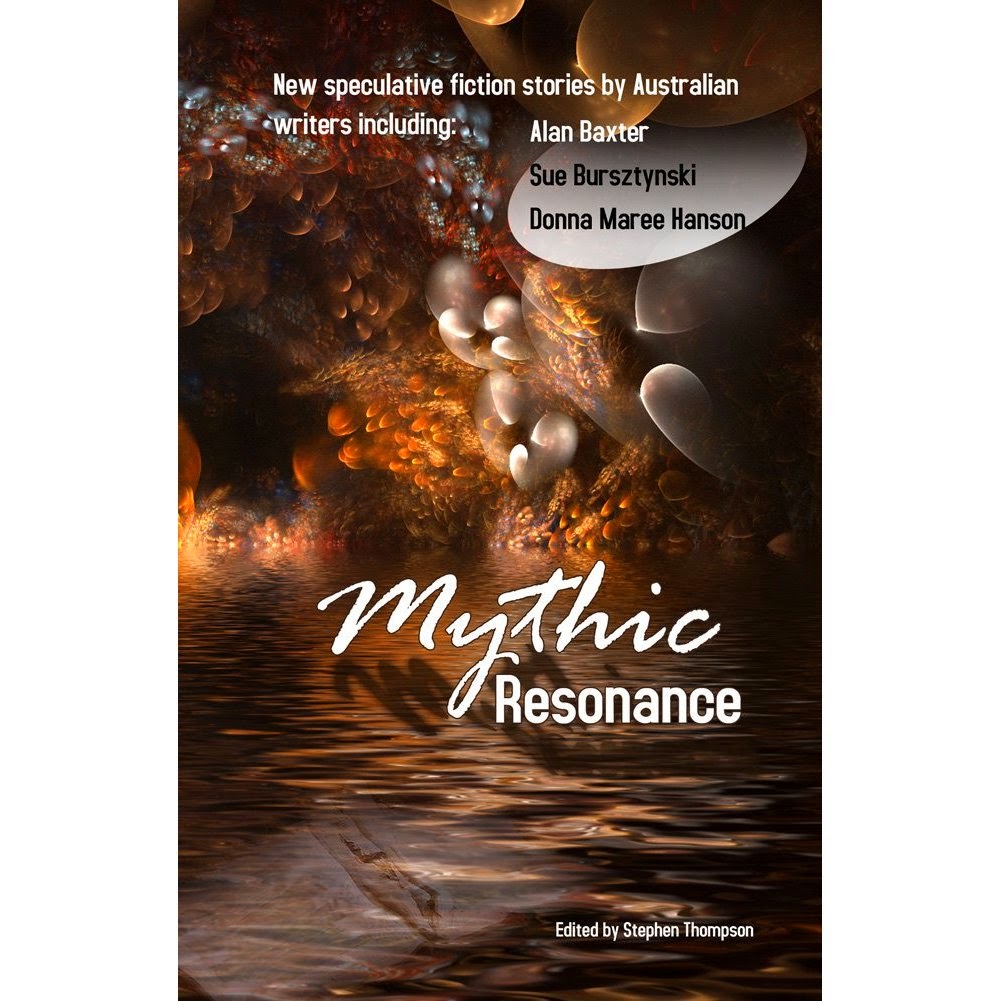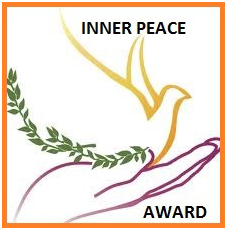About Me
- Satima Flavell
- Perth, Western Australia, Australia
- I am based in Perth, Western Australia. You might enjoy my books - The Dagger of Dresnia, the first book of the Talismans Trilogy, is available at all good online book shops as is Book two, The Cloak of Challiver. Book three, The Seer of Syland, is in preparation. I trained in piano and singing at the NSW Conservatorium of Music. I also trained in dance (Scully-Borovansky, WAAPA) and drama (NIDA). Since 1987 I have been writing reviews of performances in all genres for a variety of publications, including Music Maker, ArtsWest, Dance Australia, The Australian and others. Now semi-retired, I still write occasionally for the ArtsHub website.
My books
The first two books of my trilogy, The Talismans, (The Dagger of Dresnia, and book two, The Cloak of Challiver) are available in e-book format from Smashwords, Amazon and other online sellers. Book three of the trilogy, The Seer of Syland, is in preparation.I also have a short story, 'La Belle Dame', in print - see Mythic Resonance below - as well as well as a few poems in various places.
The best way to contact me is via Facebook at https://www.facebook.com/satimaflavell
Buy The Talismans
The first two books of The Talismans trilogy were published by Satalyte Publications, which, sadly, has gone out of business. However, The Dagger of Dresnia and The Cloak of Challiver are available as ebooks on the usual book-selling websites, and book three, The Seer of Syland, is in preparation.
The easiest way to contact me is via Facebook.
The Dagger of Dresnia
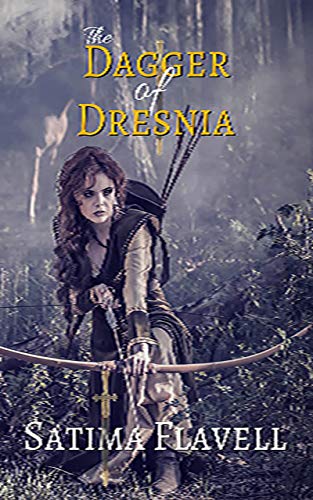
The Cloak of Challiver, Book two of The Talismans
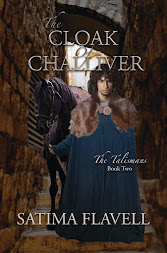
Available as an e-book on Amazon and other online booksellers.
Mythic Resonance
Mythic Resonance is an excellent anthology that includes my short story 'La Belle Dame', together with great stories from Alan Baxter, Donna Maree Hanson, Sue Burstynski, Nike Sulway and nine more fantastic authors! Just $US3.99 from Amazon.
Got a Kindle? Check out Mythic Resonance. 
Follow me on Twitter
Share a link on Twitter
For Readers, Writers & Editors
- A dilemma about characters
- Adelaide Writers Week, 2009
- Adjectives, commas and confusion
- An artist's conflict
- An editor's role
- Authorial voice, passive writing and the passive voice
- Common misuses: common expressions
- Common misuses: confusing words
- Common misuses: pronouns - subject and object
- Conversations with a character
- Critiquing Groups
- Does length matter?
- Dont sweat the small stuff: formatting
- Free help for writers
- How much magic is too much?
- Know your characters via astrology
- Like to be an editor?
- Modern Writing Techniques
- My best reads of 2007
- My best reads of 2008
- My favourite dead authors
- My favourite modern authors
- My influential authors
- Planning and Flimmering
- Planning vs Flimmering again
- Psychological Spec-Fic
- Readers' pet hates
- Reading, 2009
- Reality check: so you want to be a writer?
- Sensory detail is important!
- Speculative Fiction - what is it?
- Spelling reform?
- Substantive or linking verbs
- The creative cycle
- The promiscuous artist
- The revenge of omni rampant
- The value of "how-to" lists for writers
- Write a decent synopsis
- Write a review worth reading
- Writers block 1
- Writers block 2
- Writers block 3
- Writers need editors!
- Writers, Depression and Addiction
- Writing in dialect, accent or register
- Writing it Right: notes for apprentice authors
Interviews with authors
My Blog List
-
Whatcha Reading? April 2024, Part Two - Hello, everyone! I’m back and big thanks to Sarah for driving the Whatcha Reading party bus in my absence. I loaded up my ereader and my Libro.fm app for m...38 minutes ago
-
The Shark Is Closed for Queries - Please visit In Memoriam: Janet Reid for more about the late great Shark.5 hours ago
-
New Medieval Books: From Genghis Khan to Tamerlane - A look at how the peoples and states of Central Asia and Persia coped with the Mongol invasions and conquests, ranging from the Ilkhanate to the Timurids. ...7 hours ago
-
A To Z 2024 - Villains! - X Is for eXtras - In all the, the years I’ve been doing the A to Z Challenge, I’ve only had one occasion when I got a real X word - during my Greek Mythology posts. Tha...11 hours ago
-
New Books and ARCs, 4/26/24 - As we hurtle toward the end of another April, there’s still time to tuck in one more stack of new books and ARCs that have come to the Scalzi Compound. Wha...12 hours ago
-
Kathy Stewart books… - Kathy Stewart was a stalwart of Gold Coast Writers some years back and I appreciated her help and support with my writing. She can edit and write up some e...16 hours ago
-
Sometimes You’re a Wedged Bear in Great Tightness - That is, you are stuck. Whether you’re stuck because you got yourself in that situation or because of life circumstances… Being stuck is kind of ho...21 hours ago
-
Unlocking the Moon’s secrets: from Galileo to giant impact - Unlocking the Moon’s secrets: from Galileo to giant impact It is a curious fact that some of the most obvious questions about our planet have been the ha...23 hours ago
-
To Tate Britain - and Ellen Terry’s Dress. By Penny Dolan - The iconic portrait of Ellen Terry as Lady Macbeth in her beetle-wing dress has been a favourite painting of mine for many, many years. ...1 day ago
-
Samantha M. Bailey - Samantha M. Bailey is the USA Today, Amazon Charts, and #1 international bestselling author of Woman on the Edge, Watch Out for Her, and A Friend in the Da...2 days ago
-
Plotting 101: Top 10 Tips For Crafting Compelling Stories - Plotting Like a Pro One of the most searched-for terms on this blog is ‘help with plotting’. Plot – aka structure if you’re a screenwriter – can be a tri...5 days ago
-
The Great Discworld Retrospective No. 14: Lords And Ladies - After the colossal success of Small Gods, you might think that Terry Pratchett might have wanted to try out some other new ideas. However, given the way th...5 days ago
-
5 Common Problems With Beginnings - *By Janice Hardy, @Janice_Hardy* *If your beginning isn't working, no one will get to the ending.* A novel’s beginning is under a lot of pressure. It has...1 week ago
-
I promised photos from the trip - I feel like a slacker but I have been busy. There’s so much going on, so much to write about. We’ve been back six weeks. It feels like a short time and a l...1 week ago
-
I promised photos from the trip - I feel like a slacker but I have been busy. There’s so much going on, so much to write about. We’ve been back six weeks. It feels like a short time and a l...1 week ago
-
Mastering Blog Post Creation: 10 Essential Steps to Enhance Your Writing Process - The post Mastering Blog Post Creation: 10 Essential Steps to Enhance Your Writing Process appeared first on ProBlogger. It hits you like a TON of BRICKS!...1 week ago
-
Newsletter 16th April 2024 - Here’s a copy of my newsletter from April 16th, 2024. Sign up via my website to get newsletters directly to your inbox (and remember to check your Spam f...1 week ago
-
'The Tic-Toc Boy of Constantinople' in the revered The Conversation as one of five "Australian literary works of particular relevance to national conversations about AI" - I've always respected and admired *The Conversation, *so it is a humbling privilege to have 'The Tic-Toc Boy of Constantinople' written about in *The Con...2 weeks ago
-
Ourselves: 100 Micro Memoirs - I am lucky enough to have a non-fiction piece, ‘Helicopter Parents’, in this new release from Night Parrot Press, Ourselves: 100 Micro Memoirs. This is the...2 weeks ago
-
The Dead Boys Detective Agency. It is a very silly name. But accurate. - April 25th. DEAD BOY DETECTIVES. It's really good -- it's funny, it's smart, it's scary, and it even has a few familiar faces... (And no, you won...3 weeks ago
-
#3 WEP GET TOGETHER - APRIL 2024 - IT'S THE A - Z CHALLENGE! - Hi WEPpers and friends! Already time for out third Get Together. Life is flashing by! Hit us with your news, writerly or personal. We'd love to hear fro...3 weeks ago
-
Henry of Lancaster and His Children - The close bonds which Edward II's cousin Henry of Lancaster, earl of Lancaster and Leicester, forged with his children have fascinated me for a long time...3 weeks ago
-
Urbenville Adventure - Wow, Urbenville, what an adventure! An approach so tough I nearly threw up. Climbs so hard I’m still hurting. Plants so vicious, one grass-spike tore my co...4 weeks ago
-
Researching the birth of the first domestic violence refuge - Read a researcher's journey exploring the first few years of Chiswick Women's Aid. The post Researching the birth of the first domestic violence refuge ...5 weeks ago
-
Trip to Brazil 2024 - Landing in the Megalopolis of Sao Paulo On February 7th I flew to Sao Paulo, Brazil to start a 17 day teachi...1 month ago
-
Photo Parade 2023 - A bit of fun at the beginning of the new year. I’m following several German travel blogs, and that way came across the annual Photo Parade (Fotoparade) on ...3 months ago
-
Happy Public Domain Day 2024, the end of copyright for 1928 works - My annual reminder that January 1st is Public Domain Day, and this year copyright has ended for books, movies, and music first published in the U.S. in 192...3 months ago
-
The White Horse Band - Live Blues/Rock - 31 March 2023 Hi All, Time for some LIVE Video Music from me… (as opposed to my original stuff)…. I got into a blues/rock band for a one off gig at ...4 months ago
-
Konrath Thanksgiving - Black Friday - Cyber Monday Kindle Bundle Sale - *Get all of my ebook box sets on Amazon Kindle for 99 cents each, November 23 - 28.* *THAT'S 33¢ PER BOOK!* Almost my entire backlist of fifty-four ebooks...5 months ago
-
Questions from year 9 students - Recently – actually, not very recently but I somehow forgot to write this sooner – I did what has become an annual online Q&A with the Year 9 girls at Bedf...5 months ago
-
On Ohio, and the novels, and the new class - Just small news here. The new class is finished in first draft, and I’m now (and for the first time ever) doing the complete course bug-hunt and clean-up B...6 months ago
-
Big disruption hit book publishing before AI showed up - Publishers Weekly recently hosted a stimulating and smart online session about AI and publishing, thanks to the organizing and moderating skills of Peter...6 months ago
-
Flogometer 1180 for Christian—will you be moved to turn the page? - Submissions sought. Get fresh eyes on your opening page. Submission directions below. The Flogometer challenge: can you craft a first page that compels me ...8 months ago
-
Storny Weather - I've just been out fixing up the damage from last night's storm. This is pretty much the first time I've been able to spend much time outside and do any...8 months ago
-
Parody - The other day, for the first time in a very long time, I heard the Barbie Song. So, being me, I decided to parody it, in hour of Alianore Audley and *The...9 months ago
-
Parody - The other day, for the first time in a very long time, I heard the Barbie Song. So, being me, I decided to write a parody. Hope you like it! *Hiya, Ali...9 months ago
-
To Live and Love - To live and love for the both of us Ten years ago today I made that vow I've struggled in the decade since Not always knowing exactly how Ten years you've...9 months ago
-
“It’s Random” – a random scribble - “Why am I even here? It’s random. No Divine Thing. No actual “purpose” except what we make of it. I haven’t made anything of it except to be restless, to a...9 months ago
-
#MemorialDay, remembering a female patriot ancestor - *© 2022 Christy K Robinson* We are taught stories about heroic men who gave their lives to bring independence and liberty to their families, friends--and...10 months ago
-
A tale of two titles - I have done something notably foolish. Which is perhaps nothing new, though the circumstances on this occasion are unusual. To whit, I am publishing two bo...1 year ago
-
Poem: If Wishes were horses - A team of horses racing toward me Brown like the uniforms of soldiers fortressing me around Speckled like a found family, salt of the earth Whit...1 year ago
-
another review for the Christmas Maze - *The Christmas Maze by Danny Fahey – a Review by David Collis* Why do we seek to be good, to make the world a better place? Why do we seek to be ethi...1 year ago
-
-
-
Children’s Rights QLD Ambassador - Children’s Rights QLD appointed Karen Tyrrell (me) Ambassador for Logan City, ahead of Children’s Week, 24-29 Oct 2022. I’m an award-winning child-empowe...1 year ago
-
ANWERING THE CALL: LESSONS FROM THE THRESHOLD - NEXT STORY SANCTUARY "Anwering the Call: Lessons from the Threshold" Sept. 20, 7 pm eastern $30 Online Whether you're starting a project, a school year, ...1 year ago
-
The Green House, Chapters 1-4 (Revised) - [Dear Reader: Having refined my intentions for this novel based on a lot of recent thinking about life and art, I have restructured and revised the first f...1 year ago
-
Publishing Contracts 101: Beware Internal Contradications - It should probably go without saying that you don't want your publishing contract to include clauses that contradict one another. Beyond any potential l...1 year ago
-
Tara Sharp is back and in audio book - SHARP IS BACK! Marianne Delacourt and Twelfth Planet Press are delighted to announce the fifth Tara Sharp story, a novella entitled RAZOR SHARP, will be ...1 year ago
-
Website Update - My website www.stephendedman.com has been updated, with details of my latest books; please check it out!2 years ago
-
Non-Binary Authors To Read: July 2021 - Non-Binary Authors To Read is a regular column from A.C. Wise highlighting non-binary authors of speculative fiction and recommending a starting place fo...2 years ago
-
ATTENTION: YOU CAN’T LOG IN HERE - Hey YOU! This isn’t the forum. You’re trying to login to the Web site. THE FORUMS ARE HERE: CLICK THIS The post ATTENTION: YOU CAN’T LOG IN HERE a...2 years ago
-
I'M INSIDE A SHORT STORY!! - Ok everyone, you have to read this very short short story. Firstly because it is good, (check out the Bligh story within it too), but also because I'm ...2 years ago
-
Grandmother Dragon Forever - It feels like centuries since the last time I wrote something for the Dragon Cave. Only something of great importance would drag me out of my retirement...3 years ago
-
-
What communicates power? - Well, I have to say, I wasn't expecting to get this far behind on my reports on the show, but the launch month was very busy, and then the next month turne...4 years ago
-
The Legendary Game Pac-Man Has No Meaning. - [image: The Legendary Game Pac-Man Has No Meaning.] The Legendary Game Pac-Man Has No Meaning. Let's take a look at how this word came about. Actually, P...4 years ago
-
Readers Notice and They Care - Readers care about story details and they care about characters. Both last night and this afternoon I had conversations with readers upset about the way au...4 years ago
-
Review of Verdi's MacBeth (WA Opera) - *Our president, Frances Dharmalingham, has written a critique of a recent visit to the opera: Verdi’s ‘Macbeth’.* At Christmas 2018, my family’s gift to ...4 years ago
-
Breakout 3: tips for engaging your audience - Tips for engaging your audience: how to improve presentation, public speaking confidence and presence on stage, no matter how small the stage is. Present...4 years ago
-
The Trains Don't Stop Here - It's been a long, long time since my last blog post. One of the main reasons for this – apart from life being way too busy in general – is that, in my dwin...4 years ago
-
Portrait of a first generation freed African American family - Sanford Huggins (c.1844–1889) and Mary Ellen Pryor (c.1851–1889), his wife, passed the early years of their lives in Woodford County, Kentucky, and later...4 years ago
-
Revisiting the Comma Splice - One of the difficulties as an editor, particularly when working with fiction, is to know when to be a stickler for the rules. For some people this is not a...4 years ago
-
New releases - SFFBookBonanza - StoryOrigin - SciFi and Fantasy Book Sale - New Releases – Jul 2019 The latest and greatest new releases in Science Fiction and Fantasy books! New releases July 2019 99 cent sale - July 22nd - 28t...4 years ago
-
Assassin’s Apprentice Read Along - This month, in preparation for the October release of the Illustrated 25th Anniversary edition of Assassin’s Apprentice, with interior art by Magali Villan...4 years ago
-
STOLEN PICTURE OPTIONS TELEVISION RIGHTS TO BEN AARONOVITCH’S RIVERS OF LONDON - *STOLEN PICTURE OPTIONS TELEVISION RIGHTS TO BEN AARONOVITCH’S * *RIVERS OF LONDON* *London, UK: 29April 2019*: Nick Frost and Simon Pegg’s UK-based ...4 years ago
-
A Movie That No Writer Should See Alone - Really. REALLY. Trust me on this. particularly since this film, ‘Can you ever forgive me?’, is based on a ‘True story’ – and too many writers will see too...5 years ago
-
Review: Trace: who killed Maria James? - [image: Trace: who killed Maria James?] Trace: who killed Maria James? by Rachael Brown My rating: 5 of 5 stars Absolutely jaw-dropping, compelling readin...5 years ago
-
Dance Photo Shoots - Photo Session Planning & Preparation Have you ever wanted to do a photo shoot for dance but have been a little unsure about how and what really happens? ...5 years ago
-
On Indefinite Hiatus - (Which I pretty much have been from this site for a while already, but for real now.) You can find most archive content through the On Writing page, and li...6 years ago
-
2017 Ditmar Winners Announced - Over the Queen’s Birthday weekend, spec fic fans gathered for Continuum 13: Triskaidekaphilia. Continuum is always a great convention, and this year it was...6 years ago
-
Writing about the Crusades and talking about a "meddlesome priest" - The Middle Ages are in the news again, so here is a roundup of recent news articles. We start with three good reads from historians talking about the crusa...6 years ago
-
The One and the Many – every Sunday - My first serious girlfriend came from good Roman Catholic stock. Having tried (and failed) to be raised as a Christian child and finding nothing but lifele...6 years ago
-
A Shameless Plug Ian Likes: Bibliorati.com - A little-known fact is that I once had a gig reviewing books for five years. It was for a now-defunct website known as The Specusphere. It was awesome fun:...7 years ago
-
Book Review - Nobody by Threasa Meads - Available from BooktopiaThe subtitle for this work is *A Liminal Autobiography*. Liminal: 1. relating to a transitional or initial stage of a process. 2...7 years ago
-
A whole 'nother year-and-a-bit - Well, we have let this blog slip, haven't we? I guess Facebook has taken over from blogs to a very large degree, but I think there is still a need for blo...7 years ago
-
2017 Potential Bee Calendar – & ladybirds and butterflies - Bees on flowers – all sorts of flowers (& bees) – and lady birds and butterflies. There were hundreds (literally) of photos to choose from. This is a small...7 years ago
-
What is dyslexia? - *" **The bottob line it thit it doet exitt, no bitter whit nibe teottle give it(i.e ttecific lierning ditibility, etc) iccording to Thilly Thiywitz ( 2003)...8 years ago
-
Rai stones - *(Paraphrased from Wikipedia)*: Rai stones were, and in some cases are still, the currency of the island once called Yap. *They are stone coins which at th...10 years ago
-
Cherries In The Snow - This recipe is delicious and can also be made as a diet dessert by using fat and/or sugar free ingredients. It’s delicious and guests will think it took ...11 years ago
-
Al Milgrom’s connection to “Iron Man” - Via the Ann Arbor online newspaper - I felt it was worth repeating as a great example of Marvel doing the right thing by a former employee and without the ...13 years ago
Favourite Sites
- Alan Baxter
- Andrew McKiernan
- Bren McDibble
- Celestine Lyons
- Guy Gavriel Kay
- Hal Spacejock (Simon Haynes)
- Inventing Reality
- Jacqueline Carey
- Jennifer Fallon
- Jessica Rydill
- Jessica Vivien
- Joel Fagin
- Juliet Marillier
- KA Bedford
- Karen Miller
- KSP Writers Centre
- Lynn Flewelling
- Marianne de Pierres
- Phill Berrie
- Ryan Flavell
- Satima's Professional Editing Services
- SF Novelists' Blog
- SF Signal
- Shane Jiraiya Cummings
- Society of Editors, WA
- Stephen Thompson
- Yellow wallpaper
Blog Archive
Places I've lived: Manchester, UK

Places I've lived: Gippsland, Australia

Places I've lived: Geelong, Australia
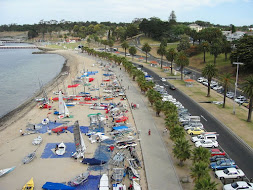
Places I've lived: Tamworth, NSW

Places I've Lived - Sydney

Sydney Conservatorium - my old school
Places I've lived: Auckland, NZ

Places I've Lived: Mount Gambier
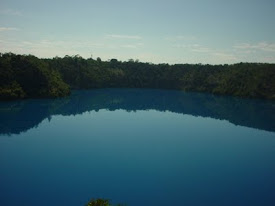
Blue Lake
Places I've lived: Adelaide, SA

Places I've Lived: Perth by Day

From Kings Park
Places I've lived: High View, WV

Places I've lived: Lynton, Devon, UK

Places I've lived: Braemar, Scotland

Places I've lived: Barre, MA, USA

Places I've Lived: Perth by Night

From Kings Park
Versatile Blogger Award
Search This Blog
Tuesday 12 August 2014
Interview: Steven Gilshenen

Steven Gilshenen is a fellow Satalyte author, one with an unusual mission or two! For years, he sought Wuxia (Kung Fu Fiction) in the English language but could find little to satisfy his thirst, so he began creating his own story of a Shaolin Warrior Monk and a Wudang Taoist Warrior. The result isThe Tigers of Wulin series, the culmination of old legends, talks with Shifu (teachers) and research into the Martial Arts in hopes of not only sharing Wuxia with the English speaking world but also of conveying the lessons within these legends. Book one, Mark of the Shaolin, is available from Satalyte and other online booksellers.
By the request of the current Head of He Family Taijiquan in China, Steve has also written the first English language book on this style of Tai Chi. It will also be released by Satalyte Publishing later this month. And as if this wasn't enough, he's written a stand-alone novel, Cloud Hands, also published by Satalyte.
Here are the questions I asked Steve, along with his replies.
1.You've been living in Japan for a decade now. What made you decide to move there?
I have a 13 year old half-Japanese son. Since culture is something I value greatly I didn't want him to grow up not knowing that side of who he is and I couldn't teach it properly to him. Japan became home (I came here in 1999 and have been back in Oz for about 3-4 years total over the years since), but Australia will always be my true home. When the big earthquake happened a lot of friends fled, and I don't question their decision, but I made the choice and stayed. I'd been here when times were great, I felt I should stay even when times got rough. Over three years have passed since that terrible time and a return to Oz for good is in the near future.
2.You had a Damascene moment when you realized that Taijiquan (Tai Chi) was something more than 'punch-kick-block'. Can you describe what triggered this change in your attitude?
It was not so much one moment as a progression of seeing I was not good at the punch-kick-block stuff no matter how hard I trained. It just wasn't the right fit for me. I met a doctor of Traditional Chinese Medicine going by the English name of John Chen in Sydney through my job and he instantly recognized I had breathing problems (due to my dad's experience with Agent Orange) and offered to teach me Qigong breathing exercises to help. The results, utterly amazing, happened pretty quickly and he began teaching me what he called the Dragon Game, something I later found out was Qinna, a method of locking an opponent's joints and manipulating their balance/posture. Unfortunately, the doctor returned to China but the seeds had been well and truly planted by this time that there was a lot more to Martial Arts than I knew. Since each body/personality type has the right fit for them as far as Martial Arts go, I knew I was lucky to find mine and began private lessons in He-Style Taijiquan. That was twenty years ago last April and I haven't sought out any other Martial Art since. When you find that perfect fit, grab a hold and enjoy the ride.
3. Many people are unaware of the different purposes of Taijiquan. Can you say something about it as a meditative training system and as a martial art? Are they both studied at once or do pupils choose to do one or the other?
What we see as Taichi around us today is a relatively modern evolution, compared to the ancient method. Originally there was no distinction between health, spiritual method or fighting system. Whatever your purpose for learning Taijiquan, it is a moving meditation and the health benefits will come. They're are undeniably amazing! But, if someone was to learn Taijiquan as a Martial Art from a knowledgeable teacher those benefits are increased considerably. I was fortunate in that my first exposure to Taijiquan came when I was around five and never saw it as anything other than its complete form of health and Martial Art. I can't speak on any one else's training program, but within my school we learn it as a Martial Art, a complete system, that happens to also give miraculous health and spiritual benefits. I personally see this as following the way it was always meant to be, but that does not mean another way is not correct nor beneficial. A little of something great is better than a lot of nothing.
4. Most people would not even think to look for fiction based on a martial arts discipline, yet you have long been interested in it. What sparked this interest in the first place?
Monkey Magic! I grew up on that show. Then I started learning Martial Arts at six but fell in and out like most Aussie kids until my late teens. I'd always loved reading, especially fantasy, but never really understood how the characters fighting didn't really differ in their methods. To use fantasy as an example, elves are slender of body and long lived (and therefore their methods would most likely be highly developed with a deeply structured instruction system) while dwarfs/dwarves are short and stocky. The philosophy and art of both would influence their combat methods as well yet it wasn't really covered anywhere I read to the degree I was looking for. Over the years I had found novels with some Martial Arts in them but I felt it didn't carry the essence of the various systems when detailing fighting or even the learning process the characters would go through sufficiently. So at 16 I started writing my own about a young Shaolin Warrior Monk in training and his Wudang Wandering Taoist buddy that is now the Tigers of Wulin series.
Writing Martial Arts themed stories is not so different from other genres. Rather than have a fight within a story, the fight is the centerpiece. But at the end of the day, the story is the most important factor. I did have a 20,000 word fight in one book that had to be cut WAY down (obviously). It can't be just one long fight from start to finish!
5. One of your stated aims in writing Tigers of Wulin was convey to a Western readership something of the philosophy and teaching of Taijiquan. How well do you think you have succeeded in this aim? Has it aroused interest among readers?
For me writing is a component of teaching. Sharing these morals, these values, is part of what I hope to do within my classes as well. I benefited greatly from them and have the duty to pass that on. Being over in Japan, and my books read in English speaking countries (other than a few in Japan and China), I haven't had many opportunities to talk with readers so I can't say confidently it has had that desired effect yet. Those I have spoken to have appreciated that component of the story, though. The next book, Cloud Hands, has a lot more of the healing and spirituality side of Kung Fu in it so we'll have to wait and see how that goes. I have studied Traditional Chinese Medicine in the past and consulted with Adam O'Mara, an acupuncturist friend, so it will be interesting to see how that is aspect is received. There are some simple acupressure methods detailed in the story which may be of interest to readers too.
6. Your new book, which is more of a text on the History, Theory, Form and Applications of He-Style Taijiquan, is now available for pre-order. Do you see it as filling a gap in the literature about martial arts in English, and if so, in what way does it differ from other handbooks on the subject?
Actually, the next book is Cloud Hands - the Origins of Taijiquan. But in a sense it is a companion to the manual you mentioned, as both are on He-Style Taijiquan. It is because of that manual that the Tigers of Wulin series and Cloud Hands even exist. See, this style of Kung Fu is not widely practised. It is difficult to find information relating to its history and theory, was almost impossible twenty years ago. To help my students access this info I wrote a little guide for them but also had it checked by He Youlu, the Head Representative of He Family. He asked me to turn this guide into the first ever English language manual on the style. Lineage and respect are of paramount importance to me so when the Head of your system, a man that is a true Martial Arts Master in every sense and one who has given you so much, asks you to do something, you get it done! While there is ample in there for people interested in the history and theory of any style of Taijiquan/Kung Fu, it is mainly for the purpose of sharing this little known style with the English speaking world, especially the students of it that haven't had access to this information before. As far as differing from other manuals, I'd have to say I have never seen a book covering the physical movements of an entire system (Form, Push Hands, applications) in such detail before on any style. I have to add, this content was only made available due to the kindness and sincere devotion to sharing from the He Family themselves.
7. Since Mark of the Shaolin is book one of Tigers of Wulin, no doubt there will be at least one further volume. How many books do you think there might be in the series?
The Tigers of Wulin series is nine books long, with room for a few off-shoots if readers want to know some of the side stories. Currently, books 2 to 5 are sitting in the Satalyte Publishing office, Book 6 is pretty much complete on my IPad. The plan is to release Book 2 - Swords of Wudang - on 25 April 2015, to coincide with World Taichi Day, as the Wudang Mountains are the legendary birthplace of Taijiquan. Originally it was due out now with Book 3 - Scroll of the Drunken Fist - coming in December but I just had to get this story (Cloud Hands) and the manual out to people. After a lot of begging I managed to persuade Stephen at Satalyte to let me get these two out this year. That said, Swords of Wudang is probably my favourite story that I have written, or a close second to Cloud Hands. It sounds like a big task writing nine connected stories but really it isn't considering I've been creating this story for over 20 years now, drawing in history and myth. In Martial Arts, there are always connections between styles if you dig deep enough, and hopefully I have provided a clear path to seeing that with these books while keeping it entertaining enough to not read like a textbook.
8. Do you plan to write stories on topics other than Taijiquan?
I can guarantee everything I write will be a Kung Fu story in some way! Whether they are based in old days China or not, my stories will always have the themes of Wuxia in them. The reason I write is a little different to most: I see it as an extension of my teaching as I said above, something I have dedicated my life to. Martial Artists spend years honing their skills, training when their family are sleeping or their friends are out having fun. But I do not believe the benefits they acquire, whether health, spiritual or self defence, should be exclusive to any one group of people. If I can share the benefits I have received to even one person who may not want to learn a Martial Art, then I have become succeeded in my goal as a writer. Already I have seen the little difference I can make and it powers me on. David Greenland of Emerald Dragon Martial Arts in Australia put me onto a great cause, that of building an orphanage at the Shaolin Temple, and I am donating a portion of sales towards this project. I have been blessed with guidance and support from so many throughout the Martial Arts and I hope I can give back and share this with others.
Thank you, Steve! I hope that your books convince many more people of the benefits of your art. And I hope you raise lots of money for the orphanage, too.
Steve has also interviewed me - you can read the result on his blog at
http://stevegilshenen.blogspot.com.au/2014/08/interview-writers-satima-flavell.html
Another nice interview
 Helen Stubbs has also interviewed me for the current community project: SF Snapshot 2014. You can read the interview on her blog.
Helen Stubbs has also interviewed me for the current community project: SF Snapshot 2014. You can read the interview on her blog.Helen was on two panels with me at the Natcon in Melbourne, and we also shared a reading slot. Here were are, discussing our glorious prose before an appreciative and surprisingly large audience! Most of them, I noticed, sat near the back, no doubt ready for a hasty getaway, but in fact only one left early, and that with an apology!
Tuesday 5 August 2014
Belly Dance memories
My Facebook friend Kevin has another set of questions, this
time about belly dancing! Answering them has been an interesting exercise, as it’s
been many years since I was a performer.
1. What was it like when you performed for the
first time?
In a word, scary! As a ballet and modern
dance performer, I was used to dancing on a stage, not in a restaurant setting.
Being able to look into the eyes of individuals in the audience and to hear the
murmur of voices under the music was weird! What really got me was having to
compete with food and drink. Usually, you can’t, and any club or restaurant performer has
to get used to that. There is the odd occasion when some people will become engaged
by the performance and actually stop eating, but that’s unusual.
2. What have been some of your most favourite
moments throughout your career as a dancer?
The odd time when people paid more
attention to the performance than the food! And those rare occasions when some
kind of magic happens and you know the audience is with you, fully engaged in
the music and the movement. Those times make a dancer remember why she dances.
3. What have been some of your least favourite
moments?
Oh, dear – there have been lots of those!
Again, they happen to everyone now and then and create embarrassment even when
I think about them fifty years down the track! Getting my veil tangled up with
an earring was mortifying. I struggled to remove the earring while
continuing to dance, eventually discarding both veil and earring. Another worrying thing was hostile musicians
who deliberately played too fast or too slow, or kept playing long after I’d
given them the signal to finish. I don’t know what it’s like now, but in the
sixties musos were often resentful of dancers, who got paid a relatively high
fee for a short act. What the musicians didn’t consider was the hours dancers have
to spend making and repairing costumes, or the time and money they spent on hairdressing
and make-up.
4. Where would you like to be (as far as your career
goes) in 5-10 years (or more) from now?
As I am now in my seventies, I may not even
be around, and if I am and can still dance, I hope I shall still be attending
classes and workshops.
5. What was it that attracted you to the
culture and/or world of belly dance the most?
When I was about fourteen, I saw the film Zarak, in which Anita Ekberg performed a
sensual dance for her lover. I watched for opportunities to learn more about
that kind of dancing – I guess I was about nineteen when I started to learn,
though. The glamorous costumes, of course, held a lot of appeal!
6. Would you have chosen to become a belly
dancer had you known then what you know now?
Probably. It’s a job that has a limited
lifespan, since there are always younger dancers waiting to step up and take
your place. As long as you accept that, and are happy to change careers when
you get older, there's lots of fun, good money, and many happy memories to be
created along the way.
7.
Who would you say has the biggest source of
inspiration for you throughout your career?
I am continually inspired by other dancers.
My current teacher, Ayesha, is typical in her generous sharing of information
and technical skill. Belyssa Radzivanas and Keti Sharif, who have done so much for belly dance in Australia,
Egypt and many other countries, are also people I thoroughly admire. So is the
wonderful Farida Fahmy, a dancer-actress of my own generation who became a dance
ethnologist as well as a fine teacher.
It’s interesting to see how belly dance has
changed over the years since I started out. My routines as performer were
always based on one or two choruses of slow music – ‘Miserlou’ was a favourite –
culminating in a floorwork section that was quite acrobatic, involving
the splits and backbends. (After one gig, I wound up at an outpatients department with a splinter in my bottom!) Then the music would change to a fast number – my favourite
was ‘Ya Mustafa’. This would get the audience clapping in time and usually led
into a nice round of applause. The whole act would take less than five minutes,
although sometimes a dancer would do two spots in the same floorshow. Today's routines don't follow that pattern, and as a result modern routines might have more artistic integrity as they set a mood and stick to it. There is also more respect for ethnicity, compared to the cabaret style I learnt and performed.
Ah, memories!
(Picture courtesy http://dance.lovetoknow.com/Belly_Dance_Clip_Art)
Subscribe to:
Posts (Atom)
